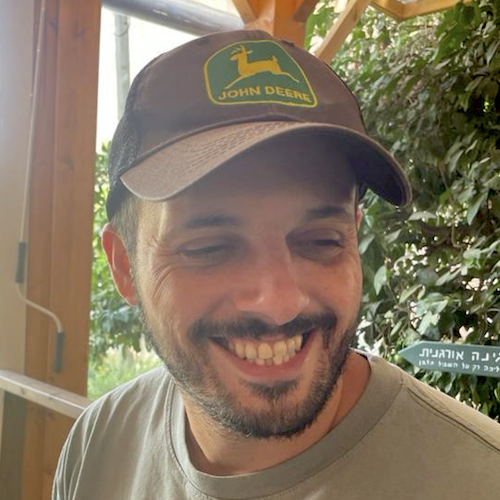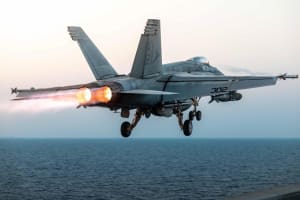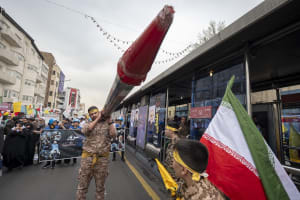Israel's year of war against Hamas: A comprehensive analysis of Swords of Iron War
Current war in Gaza marks a fundamental shift in Israel's approach to counter-terrorism operations

Breaking the mold: Israel's longest military campaign
Swords of Iron stands as a watershed moment in Israeli military history, fundamentally transforming both the strategic landscape of the region and the nature of urban warfare.
Unlike previous operations in Gaza, which typically concluded within weeks, this sustained year-long campaign has enabled the Israeli Defense Forces (IDF) to achieve unprecedented strategic depth and operational success.
Launched in response to Hamas' October 7 attack, the offensive maneuver evolved from an immediate defensive response into Israel's most comprehensive military campaign, demonstrating both strategic patience and operational sophistication previously unseen in regional conflicts.
The initial phase of the war effort showcased Israel's overwhelming air power capabilities. Within the first six days alone, the Israeli Air Force deployed approximately 6,000 precision-guided munitions against Hamas infrastructure, a tempo of operations that would have been sustainable only for days in previous conflicts.
By November 10, Israeli forces had struck over 15,000 targets, demonstrating not just military might but also sophisticated intelligence capabilities and precise targeting systems. This intensive air campaign set the stage for a transformative ground operation.
The transition to ground operations marked a crucial evolution in Israeli military doctrine regarding sustained urban warfare.
Beginning with carefully planned raids by the elite Givati Brigade and 162nd Armored Division in mid-October 2023, Israeli forces methodically expanded their operational footprint.
The full-scale ground invasion launched on October 27 saw IDF forces advance along three strategic axes: northeast near Beit Hanoun, northwest near Beit Lahia, and east near Juhor ad-Dik. This three-pronged approach allowed Israeli forces to establish and maintain unprecedented territorial control, systematically dismantling Hamas's military infrastructure while preventing the organization from regrouping or resupplying.
These early successes were built upon through the winter and spring months, as Israeli forces maintained constant pressure on Hamas strongholds. The sustained nature of the campaign allowed the IDF to thoroughly clear areas that might have received only cursory attention in previous operations. Special forces units conducted deep penetration raids, targeting key Hamas facilities and leadership, while armored units maintained control of strategic routes and high ground. This methodical approach, though time-consuming, proved crucial in achieving lasting operational success.
The hunt: Dismantling Hamas command structure
The sustained nature of the campaign has yielded remarkable quantifiable results. Israeli forces have eliminated or captured approximately 14,000 combatants, decimated Hamas's command and control infrastructure, and systematically destroyed the organization's extensive underground tunnel network. Particularly significant has been the dismantling of approximately half the Qassam Brigades' leadership structure, including the elimination of key figures who had long eluded Israeli intelligence.
The crowning achievement came with the elimination of Yahya Sinwar, the mastermind behind the October 7 attacks, during operations in Rafah. This operation, executed by the Bislach Brigade training unit, represented not just a tactical victory but a strategic turning point in the conflict. The operation itself demonstrated the sophistication of Israeli intelligence and special operations capabilities - while not specifically targeting Sinwar, the forces were able to identify and neutralize him when the opportunity arose during a search operation in the Tal as-Sultan neighborhood.
Sinwar's death, coupled with the elimination of other key figures including Muhammad Deif and Marwan Issa, has created an unprecedented leadership vacuum within Hamas. The significance of these losses cannot be overstated - no current Hamas figure commands similar military stature or authority over the military wing as Sinwar did, leaving the organization facing a critical crisis in its command structure. His unique combination of military and political credentials made him particularly effective in coordinating Hamas's various wings and maintaining relationships with external supporters.
The leadership void created by these operations has forced Hamas into difficult choices about succession and strategic direction. The organization must now choose between maintaining its current collective leadership model, elevating regional leaders to overall control, or selecting new leadership without public announcement for security reasons. Each option presents significant risks and challenges for the organization's future effectiveness.
Technological edge: Redefining modern urban warfare
The extended duration of the campaign has allowed the IDF to perfect new tactical approaches and technological solutions that would have been impossible to develop and implement in shorter operations. Israeli forces have successfully integrated advanced drone systems, AI-enhanced targeting capabilities, and sophisticated tunnel detection technology into their operations. The combined arms operations of the Givati Brigade and 162nd Armored Division have demonstrated particularly sophisticated urban warfare capabilities, seamlessly integrating infantry, armor, engineering units, and air support in complex terrain.
These technological innovations have fundamentally altered the nature of urban combat. New drone systems provide unprecedented real-time intelligence and targeting capabilities, while AI-enhanced systems help process and analyze vast amounts of data to identify threats and opportunities. The development of new tunnel detection and mapping technologies has been particularly crucial, allowing Israeli forces to systematically map and destroy Hamas's underground infrastructure.
The IDF's success in maintaining sustained operations in dense urban environments while minimizing military casualties demonstrates the effectiveness of these new approaches. Advanced command and control systems enable unprecedented coordination between ground forces, air assets, and intelligence units. The integration of various technological systems has created a comprehensive operational picture that allows commanders to make better-informed decisions in complex combat situations.
Strategic transformation: A new regional reality
The operation has fundamentally altered the regional security landscape. Unlike previous operations that achieved temporary tactical gains, this sustained campaign has established lasting strategic changes. The creation of effective buffer zones along key borders, control of strategic heights, and establishment of permanent security infrastructure provide Israel with unprecedented strategic depth.
The systematic destruction of Hamas' tunnel network, involving the mapping and elimination of hundreds of kilometers of underground infrastructure, has fundamentally altered the strategic landscape beneath Gaza's surface. This achievement denies Hamas one of its key tactical advantages and creates significant obstacles to rebuilding military infrastructure.
Throughout the extended campaign, Israel has maintained crucial international support, particularly from the United States, while effectively managing public diplomacy efforts and international media coverage. The implementation of warning systems for civilians, establishment of humanitarian corridors, and coordination with international aid organizations demonstrate Israel's efforts to balance military necessity with humanitarian concerns.
Beyond the immediate operational theater, the campaign has enhanced Israel's deterrence against regional threats and strengthened its strategic position vis-à-vis Iran. The demonstration of Israel's ability to conduct sustained, effective military operations while maintaining international support sends a powerful message to potential adversaries throughout the region.
The hostage equation: Strategic complexity and operational constraints
The hostage crisis has added unprecedented complexity to Israel's military campaign. Of the original 251 hostages taken on October 7, the situation remains dire - current intelligence assessments indicate that of the remaining 97 hostages in Gaza, 51 are believed to be alive, while 37 have been confirmed dead, with the status of others uncertain.
Through both military operations and negotiations, Israel has managed to secure the release of 140 hostages, including dramatic rescue operations like Operation Arnon in June 2024, which freed four hostages from Nuseirat, and Operation Golden Hand in February, which rescued two elderly hostages from Rafah.
The presence of hostages has profoundly influenced Israel's operational decisions throughout the campaign. Military planners have had to balance the aggressive pursuit of Hamas's leadership and infrastructure against the risk to hostage lives, leading to more precise and measured operations in areas where intelligence suggested hostages might be held.
This careful calibration was evident in operations like the June rescue in Nuseirat, where special forces conducted a complex daylight operation that succeeded in freeing hostages while maintaining operational security.
The hostage situation has also shaped Israel's negotiating position and international diplomacy. Throughout the conflict, Israel has maintained a dual-track approach - pursuing military objectives while engaging in negotiations through Qatari and Egyptian intermediaries.
The November "outline" deal, which saw the release of 81 Israeli citizens and 24 foreign nationals, demonstrated Israel's willingness to make tactical concessions for hostage recovery while maintaining strategic pressure on Hamas.
The death of key Hamas leader Yahya Sinwar, who had exclusive control over hostage-related matters, has introduced new uncertainties into negotiation dynamics, potentially complicating future deals while also removing a key obstacle to military operations.
Future horizons: Securing the victory
Looking forward, while significant achievements have been made, several challenges remain. Preventing Hamas' military reconstruction, maintaining international support, managing humanitarian concerns, and establishing lasting security arrangements will require continued strategic patience and operational sophistication. However, the foundations laid during this year-long campaign provide Israel with unprecedented advantages in addressing these challenges.
The operation has demonstrated Israel's ability to conduct sustained military operations while maintaining international support and addressing humanitarian concerns.
The elimination of key Hamas leadership, destruction of military infrastructure, and establishment of effective territorial control have created conditions for long-term strategic success that will influence Israeli military doctrine and regional security dynamics for years to come.
Operation Swords of Iron represents more than just another military campaign; it marks a fundamental shift in Israel's approach to counter-terrorism operations. Through strategic patience, technological innovation, and sustained military pressure, the IDF has achieved unprecedented success in degrading Hamas's capabilities and eliminating its leadership.
The lessons learned and capabilities developed during this campaign will shape Israeli military doctrine and regional security dynamics for years to come, establishing new standards for sustained urban warfare operations in complex environments.

Tolik is a Middle East analyst and media professional with extensive experience in covering regional geopolitical developments. His background spans analytical journalism, media production, and strategic communications, having contributed to major Israeli and international television networks and newspapers.














